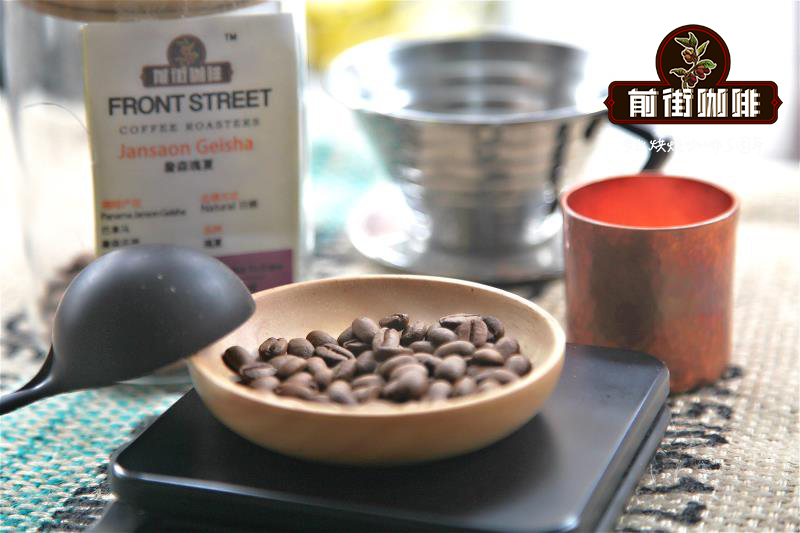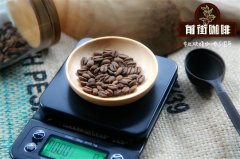Measurement of coffee bean roasting cup with regional flavor and characteristics in Costa Rica Acacia manor producing area

Professional coffee knowledge exchange more coffee bean information please follow the coffee workshop (Wechat official account cafe_style)
The seven main coffee producing areas of Costa Rica are distributed from northwest to southeast along with the inland central plateau. The volcanic terrain of Chateau Acacia in Costa Rica, with its fertile volcanic ash, mild and suitable temperature, and stable and abundant rainfall, is one of the factors that make coffee a major agricultural product in Costa Rica.
As the coffee industry in Costa Rica began to develop since the middle of the 18th century, it was the first country where coffee was first introduced into Central America and has a long history, so the coffee organization has a complete system from production to marketing. In terms of quality and quantity, the coffee of Acacia Manor in Costa Rica has always been recognized by the world, and has been rated as the world-class high-quality coffee.
Costa Rican Acacia Manor Coffee flavor description: dry aroma is cinnamon, apple and roasted nut aroma, sipping with dry aroma, with cinnamon apple flavor as the main tone, accompanied by plum, maple syrup and a hint of spice, acid value is gentle and soft malic acid, sweet balance.
The third Mathieu of 2018WBC also used coffee beans from this producing area and treated by the same anaerobic fermentation.
Introduction to anaerobic fermentation treatment of Acacia Manor in Costa Rica
The same type of coffee beans are washed and treated in the sun. Usually, washed beans show obvious acidity. There is no other reason. After removing the peel and most of the pulp through the pulp screening machine, the next step is to move into a large tank and use bacteria in the air to decompose the residual pectin on the shell beans. The decomposition process will produce acidic substances such as malic acid, citric acid, acetic acid, lactic acid and propionic acid, which can effectively increase the flavor of coffee beans.
With the help of oxygen in the air, the time required for fermentation in the flume is not long, usually 1-3 days; the longer the fermentation, the more sour. In recent years, some people have had a whim and went on to experiment. When the process of washing fermentation was placed in a hypoxic environment, it was found that it could effectively reduce the action of bacteria and the speed of fermentation & the concentration of "by-products" of various acidic substances.
Compared with the traditional washing method, the sweetness of coffee beans treated by anaerobic fermentation is more prominent, and the special aroma and flavor is very different from that of washing. It can be predicted that similar anaerobic fermentation techniques will improve in the near future, which is worth looking forward to.
Important Notice :
前街咖啡 FrontStreet Coffee has moved to new addredd:
FrontStreet Coffee Address: 315,Donghua East Road,GuangZhou
Tel:020 38364473
- Prev

Jamaican Coffee Manor Story comparison of flavors and tastes in different estates of Jamaican Blue Mountain Coffee
Professional coffee knowledge exchange more coffee bean information please follow coffee workshop (Wechat official account cafe_style) Jamaican Coffee official Coffee Industry Agency-CIB is 100% pure Jamaican Blue Mountain Coffee Regulatory Agency, the main purpose of this agency is to ensure the best quality of Jamaican Blue Mountain Coffee export! Jamaica is the first in the world to establish a statutory coffee planting location as
- Next

Costa Rican Acacia Manor Coffee and beans how to brew and describe the taste and flavor
Professional coffee knowledge exchange more coffee bean information please follow the coffee workshop (Wechat official account cafe_style) Costa Rica Acacia Manor anaerobic fermentation treatment of the same kind of coffee beans, using water washing, sun treatment results. Usually, washed beans show obvious acidity. For no other reason, the skin and most of the fruit were removed by the pulp sieving machine.
Related
- Does Rose Summer choose Blue, Green or Red? Detailed explanation of Rose Summer Coffee plots and Classification in Panamanian Jade Manor
- What is the difference between the origin, producing area, processing plant, cooperative and manor of coffee beans?
- How fine does the espresso powder fit? how to grind the espresso?
- Sca coffee roasting degree color card coffee roasting degree 8 roasting color values what do you mean?
- The practice of lattes: how to make lattes at home
- Introduction to Indonesian Fine Coffee beans-- Java Coffee producing area of Indonesian Arabica Coffee
- How much will the flavor of light and medium roasted rose summer be expressed? What baking level is rose summer suitable for?
- Introduction to the characteristics of washing, sun-drying or wet-planing coffee commonly used in Mantenin, Indonesia
- Price characteristics of Arabica Coffee Bean Starbucks introduction to Manning Coffee Bean Taste producing area Variety Manor
- What is the authentic Yega flavor? What are the flavor characteristics of the really excellent Yejasuffi coffee beans?

